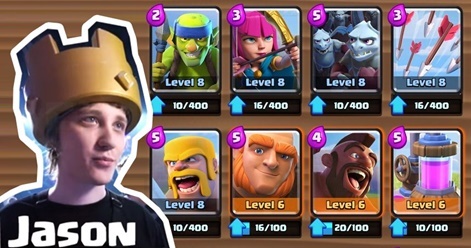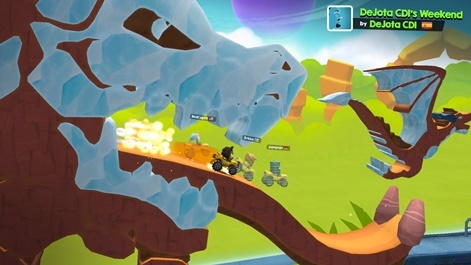Sami Kalliokoski is creative director at Traplight Games.
User-generated content is often associated with social media, where all posts, shares and comments are user created. However, UGC is no stranger to games either - level editors and modding has been a common occurrence in games for decades.
At Traplight (developer of Big Bang Racing), we see UGC as enhanced player autonomy - an increased pool of choices and possibilities the players have in the game. That autonomy starts with how you control the game and create your unique playing style.
The playing style as such is rarely cited as UGC. But when you look at, for example, placing points on talent trees to twist game mechanics, customising characters and all that express our identities as players, it is not so clear where the player choices are UGC.
This is especially true in social free-to-play games. The same goes for user-created characters, storylines and tactics that become popular. In Clash Royale, Supercell has named decks after players who started using a particular unit combination in a successful way.
While UGC has been a big part of games for a long time (in the form of autonomy), there is one question that divides UGC games into two main categories.

This question is about how UGC is used in a game: how does the created content help the content creator achieving their goals in the game? We have identified two-high level approaches to UGC games: player-centric UGC and creator-centric UGC.
The first approach
We call this player-centric UGC – which is the more popular one of the two. It is used through enhanced player autonomy to give the players an edge over another, via strategic city layouts, counter-decks and tactical character synergies.
We see UGC as enhanced player autonomy - an increased pool of choices and possibilities the players have in the game.
The signature of this approach is direct competition between the players. In other words, players customise their gameplay to win. Thanks to the success of this approach, there is a high number of city builders, RPGs and MOBAs in the mobile F2P market.
The second approach
We call this creator-centric UGC – which is used to gain social validation. Instead of optimising player power to win, the creators use their enhanced autonomy to craft enjoyable gameplay experiences by setting flow, pacing, elements of surprise and unique visuals of their creations.
If they succeed in entertaining other players, they receive likes that convert into other rewards. In this approach, players create content for other players' enjoyment – much as games developers do. Big Bang Racing – with its eight million player-created tracks – was born from this approach.
Similarities and differences
These two high-level approaches have different end goals. The player-centric is aiming for power through winning and is rewarded by more power and higher social standing (leaderboard, rank) based on your success.
The latter aims for social validation and is rewarded by increased social influence and size of an audience. Large audience grants players a possibility to start their own trend in the game – an achievement that is comparable to having a deck named after you in player-centric UGC.

Creator-centric UGC has lots of similarities with UGC in current social media. They both rely on people delivering interesting content, giving and receiving social validation and growing a following.
They both also allow opportunity for becoming an influencer, much like streamers in YouTube and Twitch, but inside a game, by providing your unique content to your audience of other players. In Big Bang Racing, the highest rated creators have tens of thousands of followers.
But in social media, there is no direct way to monetise your UGC content creation process. This is because the content creation tools – cameras, cell phones or animated gif makers – are external to social media platforms.
The camera and the skills used to take great pictures for Instagram or Facebook, attracting thousands of likes, are external to the publishing platform.
In UGC games, the content creation tools are internal to the game, creating a new kind of potential for monetisation.
Here lies the unique puzzle in UGC gaming – how to monetise the player creation process and longing for social acceptance.





















